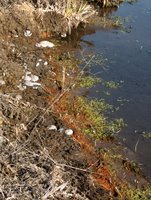Consulting soil scientists generally work in separation from academia. This post pulled hard on my sense of science-business identity. On the one hand, we at SSSA and NSCSS do hold closely to Peter Drucker's position that the knowledge worker gains access to work, job and social position through formal education. Qualifying for voting membership and leadership in either soil science society requires formal education. As it should. Yet, in common with the poster, we in soil science consulting achieve and maintain our success almost entirely through informal means.
Over 10 years ago in 1994 Peter Drucker
gave a lecture at Harvard University’s John F. Kennedy School of Government about knowledge workers.
He starts by saying that
“in the first place, the knowledge worker gains access to work, job and social position through formal education” and continues to explain the importance of formal education for becoming a knowledge worker. He emphasizes the role of formal schooling as the central gravity for new knowledge workers and that learning knowledge work cannot be achieved through apprenticeship or any other method than formal education.
I really appreciate much of the ideas presented by Mr. Drucker. He has influenced much of my own thinking, but this is something I can hardly agree on nowadays. I’m a glitch in his system, because I have achieved my social position and access to work mainly through informal means. I find it very hard to achieve my current social position through any other means than my own informal knowledge working practices. A lot of advanced level knowledge workers I know and appreciate work systematically with knowledge in informal settings.
He continues: “Increasingly, an educated person, will be someone who has learned how to learn, and throughout his or her lifetime continues to learn, especially in and out of formal education.“
Spot on. In my opinion, it’s not only the role of formal education that will be central to continuous learning after preliminary education, but rather systematic working practices in networks of knowledge: informal or formal.
In formal education we still focus much of our time on learning theories without proper application. Drucker says that “in the knowledge society, knowledge basically exists only in application” and that “knowledge in application is effective only when it is specialized“. While formal education mainly teaches us to be generalists by just requiring us to pass a certain designated level of “good enough”, in knowledge society leadership will concentrate around specialists who have acquired additional specialized skills that have importance in application. The only way to acquire those skills is to have the passion for learning and to deeply explore new territories with other people
I agree thoroughly with this last point. Soil science consultants need to become aware of the issues surrounding open access (OA) to scientific knowledge. Our effectiveness and our growth depend on it. In closing, I think we should recognize the considerable advances made (and continuing) at the SSSAJ to balance the benefits of OA with the need for revenue sufficient to support publishing.URL: OA update to Peter Drucker[from: Open Access News]





